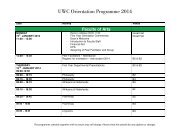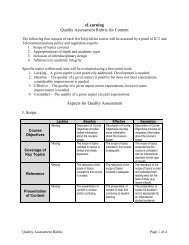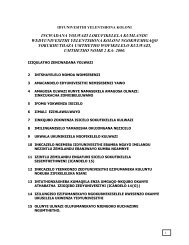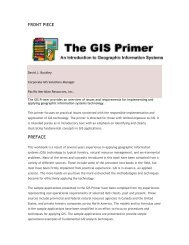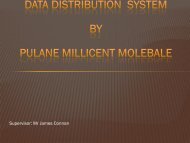Ecosystem Guidelines for Environmental Assessment
Ecosystem Guidelines for Environmental Assessment
Ecosystem Guidelines for Environmental Assessment
Create successful ePaper yourself
Turn your PDF publications into a flip-book with our unique Google optimized e-Paper software.
CONTENTS<br />
7 :<br />
8 :<br />
10 :<br />
14 :<br />
22 :<br />
24 :<br />
38 :<br />
44 :<br />
FOREWORD<br />
PREFACE<br />
INTRODUCTION<br />
Purpose of the guidelines<br />
The drafting process<br />
Limitations of the guidelines<br />
Structure of the guidelines<br />
TAKING A PRO-ACTIVE APPROACH: INCLUDING BIODIVERSITY CONSIDERATIONS IN PRE-<br />
APPLICATION PROJECT PLANNING<br />
Why take a pro-active approach<br />
A step-by-step guide to pre-application biodiversity assessment<br />
1. Prepare <strong>for</strong> site visit<br />
2. The site visit: planning to avoid, minimise and remedy impacts on biodiversity<br />
3. Finding of “no significant impact”<br />
4. When significant impacts are unavoidable<br />
5. Contributing to conservation gains<br />
6. Biodiversity in<strong>for</strong>mants in environmental assessment reporting<br />
Public participation and authority review<br />
A NOTE ON FIRE<br />
1. COASTAL ECOSYSTEMS<br />
- ESTUARIES<br />
- SANDY BEACHES AND DUNE SYSTEMS<br />
- STRANDVELD, DUNE THICKET AND DUNE FYNBOS<br />
2. LOWLAND FYNBOS ECOSYSTEMS<br />
Incorporating Sand Fynbos and Limestone Fynbos<br />
3. MIDLAND and MOUNTAIN FYNBOS ECOSYSTEMS<br />
Incorporating Alluvial Fynbos; Granite, Ferricrete, Conglomerate and Silcrete Fynbos; Grassy<br />
Fynbos; and Sandstone Fynbos



